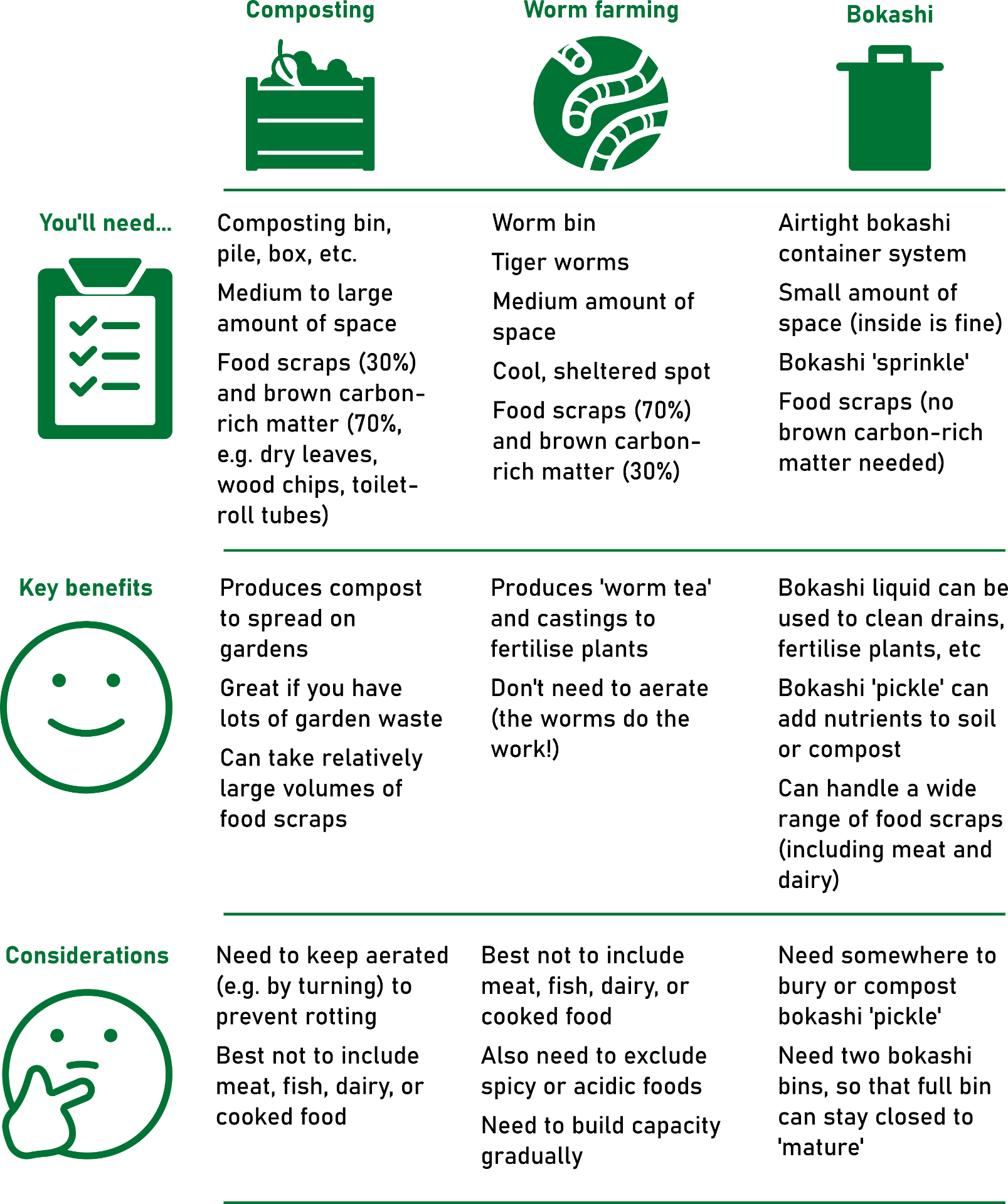The government’s launch of Te rautaki para – Waste strategy today sheds light on the importance of how we create and manage waste in Aotearoa New Zealand, and sets out a pathway for changing unsustainable practices where valuable resources are wasted in enormous quantities each year.
The challenge of food waste is a familiar one to most New Zealanders. The average household in Aotearoa produces some 160 kilograms of food waste per year, throwing away almost eight-hundred dollars’ worth of unused food annually. This waste has become a pressing environmental concern; the majority of household food waste in Aotearoa gets landfilled, where it releases potent greenhouse gases, and its nutrient value is lost. Luckily, a variety of solutions exist for inedible food waste, although the diversity of choice can be overwhelming at first. For example, you could compost your food waste yourself, take it to a community facility, use a bokashi bin, wash it down the sink, or feed it to your dog – but which to choose and why?
While the main output of the OPMCSA food waste project is a series of reports with recommendations for government, we wanted to share some of what we’ve been learning as an accessible web resource so that you don’t have to dig through our reports to find out what to do with your apple core.
We ask what can be done instead of sending food waste to landfill, exploring home, community, and industrial options for food waste management. The focus is on household food waste but we cover information relevant to businesses and councils looking for food waste solutions too. In addition, we’ve included some illustrative case studies for you to dig into, with Kaicycle, FlyFarm, Living Earth, Mynoke, Ecogas, and Pyrocal who have all generously sharing time and insights with the team. A big thanks to our peer reviewers too.
At a glance: at-home options for food waste

As well as familiar processes like composting and worm farming, we describe processes that are new to Aotearoa, less widely practiced, or yet to be trialled here. We cover anaerobic digestion, where microbes break down food waste in large oxygen-free tanks and create valuable biogas, and commercial fly farming, where fly larvae eat their fill of food waste and produce a nutrient-rich frass. You can also discover the ratio of garden waste to food waste needed to make the perfect home compost, the best place to put your worm farm, how to find a community composter near you. Throughout, we include links to handy resources, infographics, photos, and informative videos produced by the Compost Collective.
You can also link to information on the wider context of solutions for food waste. Drawing on the food recovery hierarchy and circular economy – prevention is better than cure.
Ngā manaakitanga,

This web resource is part of OPMCSA’s wider project on food waste, which you can read about here. The food waste project is ongoing, and we continue to welcome new members into the reference group. If you’d like to be involved or have any questions, please contact us at info@pmcsa.ac.nz








